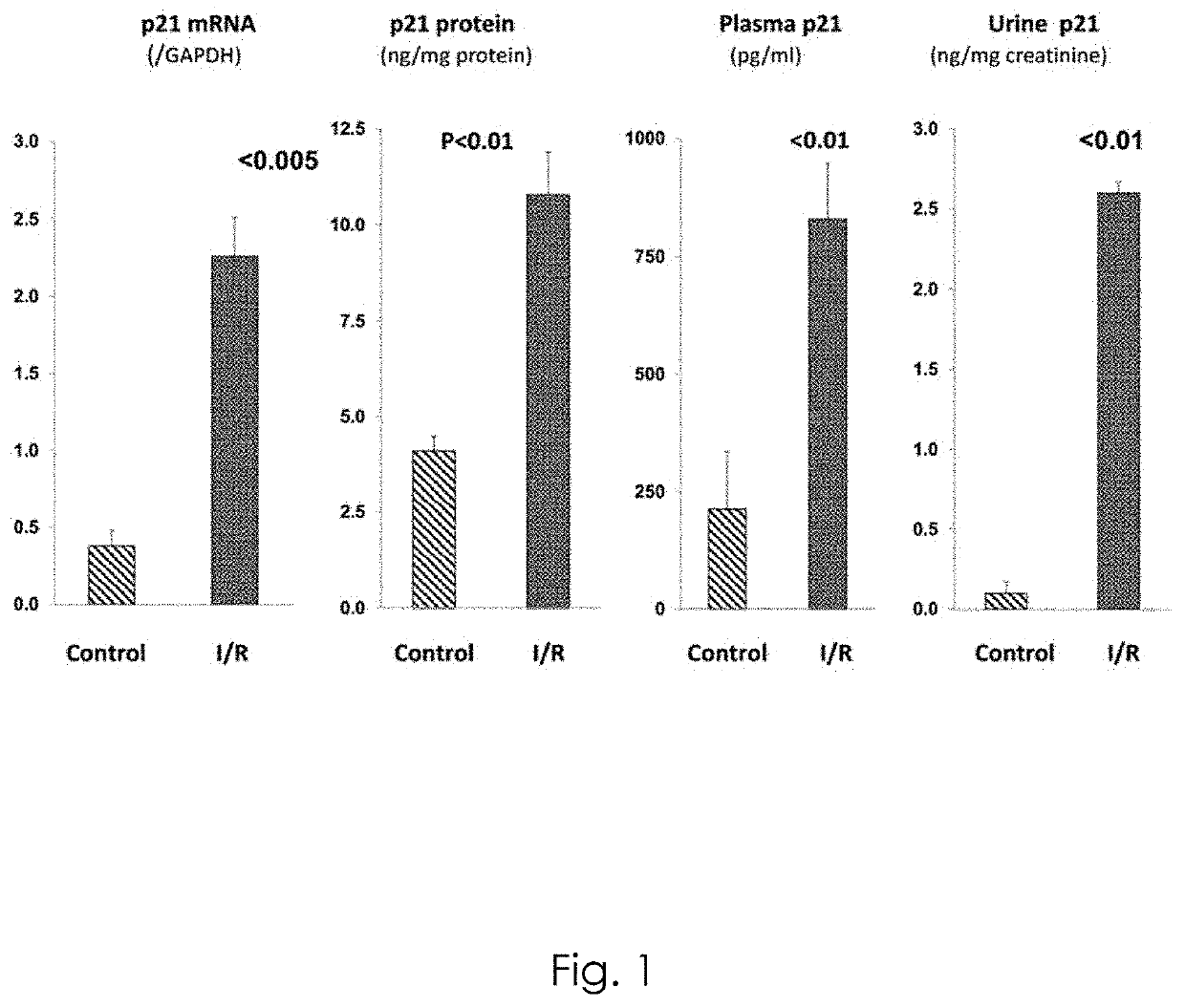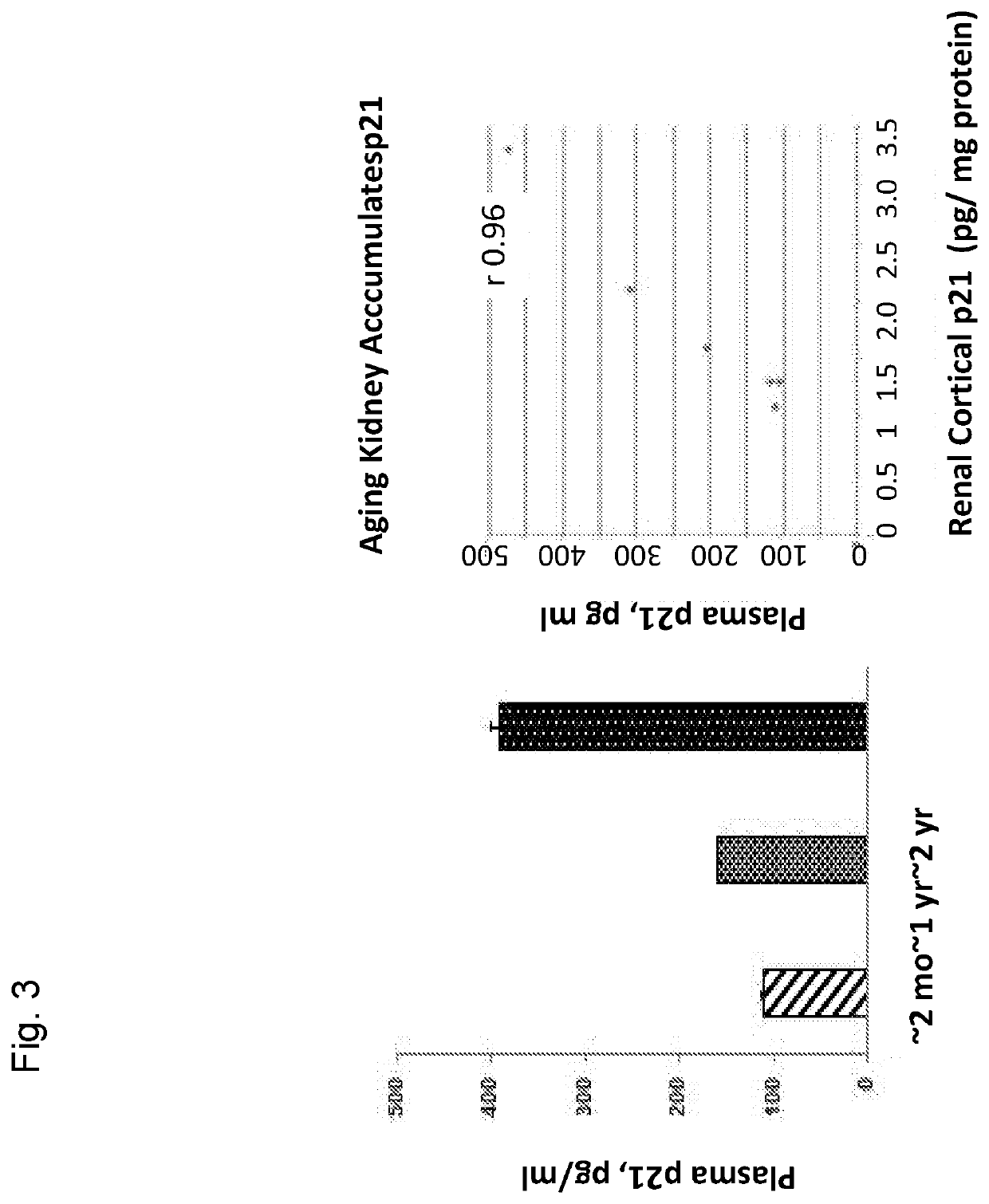Methods of treating patients at risk for renal injury and renal failure
a technology for patients at risk of renal injury and renal failure, applied in the direction of nitrile/isonitrile active ingredients, instruments, drug compositions, etc., can solve the problems of substantial morbidity and mortality, arf complicating about 5% of hospital admissions, and reducing urine output. to achieve the effect of reducing the risk of further kidney injury
- Summary
- Abstract
- Description
- Claims
- Application Information
AI Technical Summary
Benefits of technology
Problems solved by technology
Method used
Image
Examples
Embodiment Construction
[0031]Also known as cyclin-dependent kinase inhibitor 1, or CDK-interacting protein 1, p21 is a cyclin-dependent kinase inhibitor (CKI) that is capable of inhibiting all cyclin / CDK complexes. The amino acid sequences for human p21 is as follows:
MSEPAGDVRQNPCGSKACRRLFGPVDSEQLSRDCDALMAGCIQEARERWNFDFVTETPLEGDFAWERVRGLGLPKLYLPTGPRRGRDELGGGRRPGTSPALLQGTAEEDHVDLSLSCTLVPRSGEQAEGSPGGPGDSQGRKRRQTSMTDFYHSKRRLIFSKRKP
[0032]P21 represents a major target of p53 activity and thus is associated with linking DNA damage to cell cycle arrest. This makes p21 a promising diagnostic molecule to test for this process. The present invention relates to the use of the p21 biomarker in the early detection and treatment of acute renal injury or failure, and associated cell cycle arrest, as well as testing kits for the p21 biomarker, preferably in both plasma and urine. The present inventors have found that p21 may be therapeutically used to treat conditions, particularly conditions affecting the kidney, includ...
PUM
| Property | Measurement | Unit |
|---|---|---|
| time | aaaaa | aaaaa |
| concentrations | aaaaa | aaaaa |
| renal stress | aaaaa | aaaaa |
Abstract
Description
Claims
Application Information
 Login to View More
Login to View More - R&D
- Intellectual Property
- Life Sciences
- Materials
- Tech Scout
- Unparalleled Data Quality
- Higher Quality Content
- 60% Fewer Hallucinations
Browse by: Latest US Patents, China's latest patents, Technical Efficacy Thesaurus, Application Domain, Technology Topic, Popular Technical Reports.
© 2025 PatSnap. All rights reserved.Legal|Privacy policy|Modern Slavery Act Transparency Statement|Sitemap|About US| Contact US: help@patsnap.com



